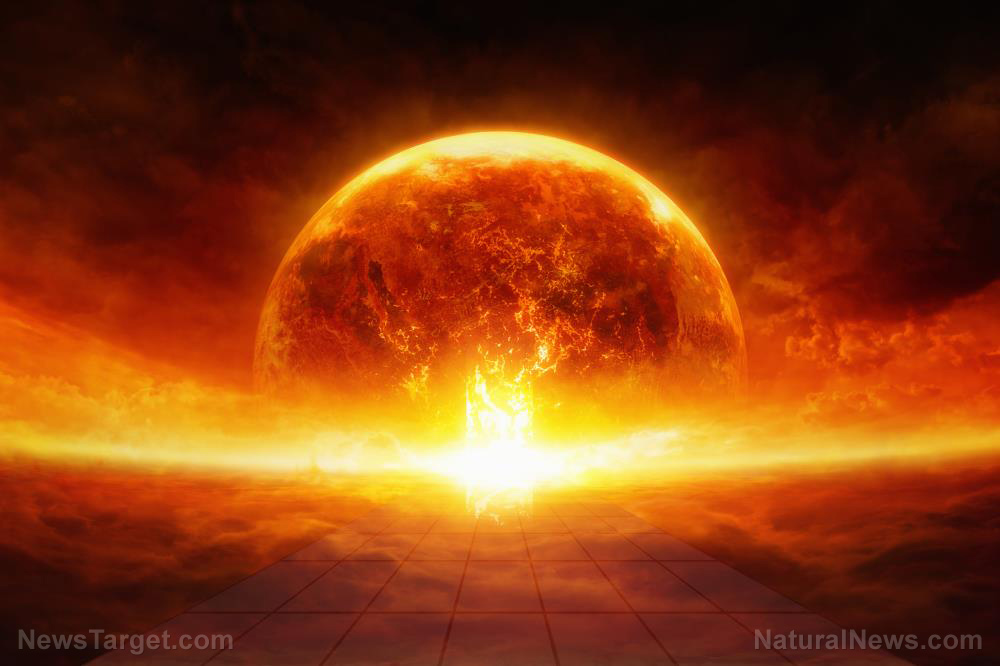Skyscraper-sized asteroid spotted near Earth deemed “potentially hazardous” by NASA
08/08/2023 / By Zoey Sky

A new algorithm has helped astronomers detect 2022 SF289, a skyscraper-sized asteroid hiding in plain view near Earth. The algorithm was designed to hunt the biggest and most dangerous space rocks.
Experts report that 2022 SF289 is 600-foot-wide (180 meters) and orbits close enough to Earth to be classified as a potentially hazardous asteroid (PHA). The asteroid 2022 SF289 is one of an estimated 2,300 similarly classed objects.
Potentially hazardous asteroids are near-Earth objects (NEOs) that are larger than 460 feet (140 meters) in diameter.
PHAs could come within 4.65 million miles (7.48 million km) of Earth, or roughly 20 times the average distance between Earth and the moon. If an asteroid of this size breaks through the planet’s atmosphere without burning up, it could result in widespread damage and countless injuries, especially if it landed in a densely populated city.
Fortunately, experts say that there is no risk of collision with 2022 SF289, at least in the foreseeable future.
According to the National Aeronautics and Space Administration (NASA), 2022 SF289 first made a close approach to Earth in September 2022, when it flew within about 4.5 million miles (7.2 million kilometers) of the planet.
However, astronomers around the world didn’t detect the asteroid in telescope data at any point before, during or after the approach because 2022 SF289 was hidden by Milky Way starlight.
But experts have finally discovered the asteroid’s existence while testing out a new algorithm that was designed to specifically detect large asteroids from small fragments of data.
The detection of a PHA that is hard to spot using traditional methods proves the usefulness of the algorithm, which will soon be used to analyze data gathered by the Vera C. Rubin Observatory.
The observatory contains a cutting-edge telescope in the Chilean mountains and it is slated to begin asteroid-hunting operations in early 2025. (Related: “Invisible” asteroids could hit Earth at any time, researchers warn.)
Algorithm helps experts spot 2022 SF289
Mario Juric, one of the brains behind the new algorithm and the director of the Institute for Data Intensive Research in Astrophysics and Cosmology at the University of Washington, explained that the discovery of 2022 SF289 hints at what the world can expect from the Rubin Observatory in less than two years, which is when researchers estimated that the HelioLinc3D algorithm will be discovering a similar heavenly object like the asteroid every night.
Experts discovered 2022 SF289 by testing their algorithm on archival data from the Asteroid Terrestrial-impact Last Alert System (ATLAS) survey in Hawaii.
ATLAS takes at least four images of the same spot of the sky every night. The analysis revealed something that ATLAS had missed: a large asteroid, visible in three separate sky images taken on September 19, 2022, and the next three nights.
For ATLAS to work, an object must first appear in four separate images taken on a single night before that object can be considered an asteroid. Because 2022 SF289 did not meet that criteria, astronomers didn’t know about its close brush with Earth.
The new HelioLinc3D algorithm is designed to quickly produce asteroid detections from much less data.
The HelioLinc3D algorithm was designed with the Rubin Observatory in mind. While the observatory can only scan the sky twice every night, it will do so in much higher detail than most modern observatories, said the researchers.
The team believes that 2022 SF289 is only the first of many exciting discoveries for Rubin and the new algorithm.
Members of the team said there may be thousands of hidden PHAs circling Earth, awaiting detection. They are more than ready to make these discoveries to share them with the world.
Visit Space.news for more stories about asteroids and space-related updates.
Watch the video below to learn more about NASA’s secret space program.
This video is from the Global Citizens channel on Brighteon.com.
More related stories:
NASA warns: Earth at GREATER RISK of being destroyed by asteroid than earlier thought.
Ryugu asteroid holds building blocks of life older than the solar system.
Space hazards: 8 Huge asteroids made closest approach to Earth in the first 14 days of 2023.
Sources include:
Submit a correction >>
Tagged Under:
2022 SF289, algorithm, asteroids, computing, cosmic, dangerous, future science, future tech, Glitch, HelioLinc3D algorithm, information technology, NASA, near-Earth objects, potentially hazardous asteroid, research, Space, space exploration, space hazards, Space Objects, space rocks
This article may contain statements that reflect the opinion of the author
RECENT NEWS & ARTICLES
COPYRIGHT © 2017 SPACE.COM
All content posted on this site is protected under Free Speech. Space.com is not responsible for content written by contributing authors. The information on this site is provided for educational and entertainment purposes only. It is not intended as a substitute for professional advice of any kind. Space.com assumes no responsibility for the use or misuse of this material. All trademarks, registered trademarks and service marks mentioned on this site are the property of their respective owners.




















